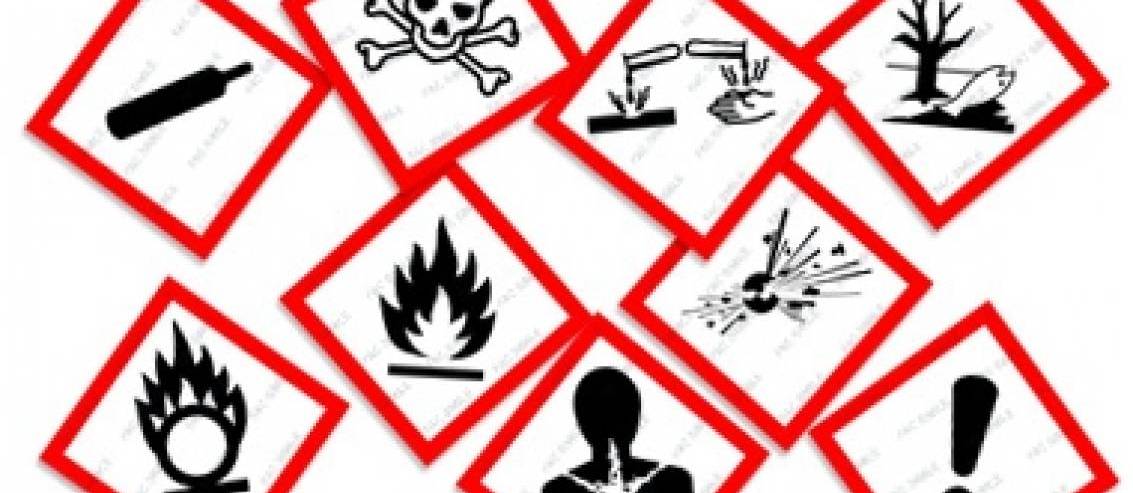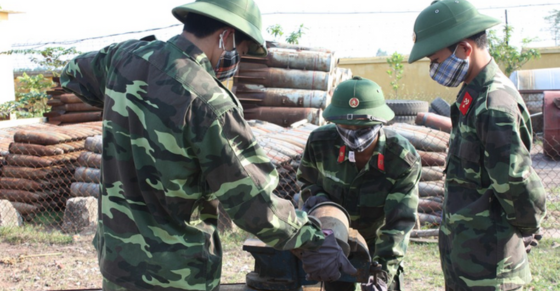Recently, the Ministry of Labor, War Invalids and Social Affairs issued Circular 11/2020/TT-BLDTBXH on the List of arduous, hazardous and dangerous occupations and works, and extremely arduous, hazardous and dangerous occupations and works in Vietnam
The Ministry of Labor, War Invalids and Social Affairs regulates the List of arduous, hazardous and dangerous occupations and works, and extremely arduous, hazardous and dangerous occupations and works in the field of fisheries including:
|
No. |
Occupation or work |
Working conditions |
|
|
Class-VI working conditions |
|
|
1 |
Operating, repairing, and maintaining engines of offshore and onshore fishing ships. |
Extremely arduous and dangerous work; static working posture; working under impact of heat, tremor, gasoline, oil and loud noise. |
|
2 |
Operating, repairing, maintaining engines of fisheries surveillance vessels and research vessels |
Extremely arduous and dangerous work; working under impact of tremor and loud noise |
|
3 |
Diving to catch natural seabed organisms. |
Extremely arduous and dangerous work. |
|
4 |
Manually loading in the holds of fishing ships |
Extremely arduous work; working in confined space lacking oxygen; static working posture. |
|
5 |
Sea divers (raising fish in cages at sea). |
Constantly diving at a depth more than 10 m to check cages. |
|
|
Class-V working conditions |
|
|
1 |
Officers and crew members working on offshore and onshore fishing ships |
Arduous and dangerous work; working under impact of wind, waves, tremor and noise. |
|
2 |
Harvesting swallow’s nest. |
Constantly working on remote islands; arduous and extremely dangerous work. |
|
3 |
Operating machines for grinding, crushing, and drying seafood waste for producing cattle feed. |
Working in dirty and smelly work; working in contact with heat, noise, dust, and pathogenic fungi and microorganisms. |
|
4 |
Officers and crew members working on fisheries surveillance vessels and research vessels |
Arduous and dangerous work; working under impact of waves, wind and tremor. |
|
5 |
Loading and unloading ice from marine fishing ships. |
Extremely arduous work; working in confined space; static working posture. |
|
6 |
Regularly working in cold holds or storage. |
Arduous work; static working posture; working in confined and cold space. |
|
7 |
Extracting ingredients and producing breeding stimulants for fish. |
Working in frequent contact with toxic chemicals such as H2SO4, acetone, benzoic acid. |
|
8 |
Installing, repairing mechanical and refrigeration electrical equipment, pipelines, and valves in the holds of marine fishing ships. |
Arduous work; working in confined space; static working posture; working in contact with pathogenic microorganisms. |
|
9 |
Officers and crew members working on ships purchasing and transporting aquatic products at sea. |
Arduous and dangerous work; working under impact of waves, wind, noise and tremor, and in contact with stinking and smelly aquatic products. |
|
10 |
Performing cage culture at sea |
Working at sea; working under frequent impact of sea waves, unexpected whirlwind |
|
11 |
Harvesting catfish and basa fish. |
Working outdoor and underwater; frequently carrying heavy objects; dangerous work. |
|
|
Class-IV working conditions |
|
|
1 |
Raising oysters for pearls. |
Outdoor and arduous work; frequently soaking in water. |
|
2 |
Processing frozen aquatic products and seafood |
Standing throughout the shift; working in frequent contact with cold water, and in a swampy and damp environment. |
|
3 |
Operating frozen aquatic products and seafood processing systems |
Working in confined space, and in frequent contact with heat, noise; wet workplace. |
|
4 |
Operating, repairing, and maintaining cold storage, block ice making machines and flake ice making machines |
Arduous work; static working posture; working in frequent contact with cold. |
|
5 |
Processing ingredient fish sources, various fish pastes, dried aquatic products and seafood; cleaning packages and fermentation barrels. |
Arduous work; static working posture; working at a swampy and wet place. |
|
6 |
Directly providing technical guidance on production of breeding stimulants for fish. |
Working under impact of toxic chemicals such as H2SO4, acetone, benzoic acid. |
|
7 |
Repairing fishing equipment |
Manual and arduous work; static working posture; working in frequent contact with pathogenic microorganisms. |
|
8 |
Raising and catching aquatic products in rivers, lakes and swamps. |
Dangerous and extremely arduous work; working in frequent contact with pathogenic microorganisms. |
|
9 |
Stretching, steaming, dying nets. |
Extremely arduous work; working under frequent impact of high temperature and toxic chemicals. |
|
10 |
Operating, repairing, and maintaining equipment for producing and recycling strings. |
Static working posture; working under impact of noise and toxic chemicals. |
|
11 |
Producing strings for weaving nets |
Monotonous work; optical strain; working in contact with noise and dust |
|
12 |
Knotting strings manually or instrumentally |
Arduous work; static working posture; working under impact of noise and dust. |
|
13 |
Conducting chemical tests to analyze quality of aquatic products and seafood |
Working in frequent contact with toxic chemicals. |
|
14 |
Producing feeds for shrimps and fish |
Arduous work; working under impact of dust and noise |
|
15 |
Producing Chitin, Chitosan, Gelatin Alginate, Agar-agar |
Arduous and outdoor work; working in contact with alkali, acids, and bleach (javel). |
|
16 |
Mixing pasta compounds to make can lids; coating food cans with varnish. |
Working in frequent contact with NH3, paint, and organic solvents. |
|
17 |
Creating, directing the creation of breeds of shrimps, fish, mollusks, and other aquatic products and seafood. |
Arduous and outdoor work; working in swamps, rivers, lakes, etc. |
|
18 |
Taking and analyzing water samples and organism samples; processing specimens. |
Working in frequent contact with H2SO4, HCl, etc. |
|
19 |
Operating net weaving machines |
Arduous work; working under impact of noise |
|
20 |
Drying, concocting, testing fish oil softgels |
Working in frequent contact with heat, alcohol, and acetone. |
|
21 |
Doing industrial cleaning job in aquatic product and seafood processing factories. |
Manual and arduous work; static working posture; working in frequent contact with pathogenic microorganisms. |
|
22 |
Raising lobsters in cages |
Frequently diving at 5 - 8 m. |
Note: Employees engaged in arduous, hazardous and dangerous occupations and works are entitled to occupational disease benefits if they meet the following conditions:
- Suffering from a disease listed in the occupational disease list issued by the Ministry of Health and the Ministry of Labor - Invalids and Social Affairs when working in an environment or occupation with toxic factors.
- Cases of work capacity reduction of 5% or more due to an occupational disease.
In addition, Employees working in conditions with hazardous or harmful factors are provided with material allowances by the employer. The material allowance is calculated based on the daily labor productivity rate and is equivalent to the following monetary values: Level 1: 10,000 VND; Level 2: 15,000 VND; Level 3: 20,000 VND; Level 4: 25,000 VND.
Employees engaged in arduous, hazardous and dangerous occupations and works, or particularly arduous, hazardous and dangerous occupations and works, must undergo regular health examinations at least every 6 months. Those working in environments with potential risks of occupational diseases will be examined to detect occupational diseases. Before assigning or transferring Employees to arduous, hazardous and dangerous occupations and works, the employer must organize health examinations for the Employees.
Furthermore, Employees engaged in arduous, hazardous and dangerous occupations and works must be provided with adequate personal protective equipment and devices of the correct type, target, quantity, and quality according to national standards and technical regulations. The employer cannot provide money instead of providing personal protective equipment; they cannot force Employees to purchase personal protective equipment or deduct money from the Employees to buy them. The employer is responsible for instructing and supervising Employees in the use of personal protective equipment and organizing measures to detoxify, disinfect, and decontaminate used personal protective equipment in places prone to poisoning, infection, or radiation.
Duc Thao
 Article table of contents
Article table of contents










.Medium.png)
.Medium.png)
.Medium.png)
.Medium.png)
